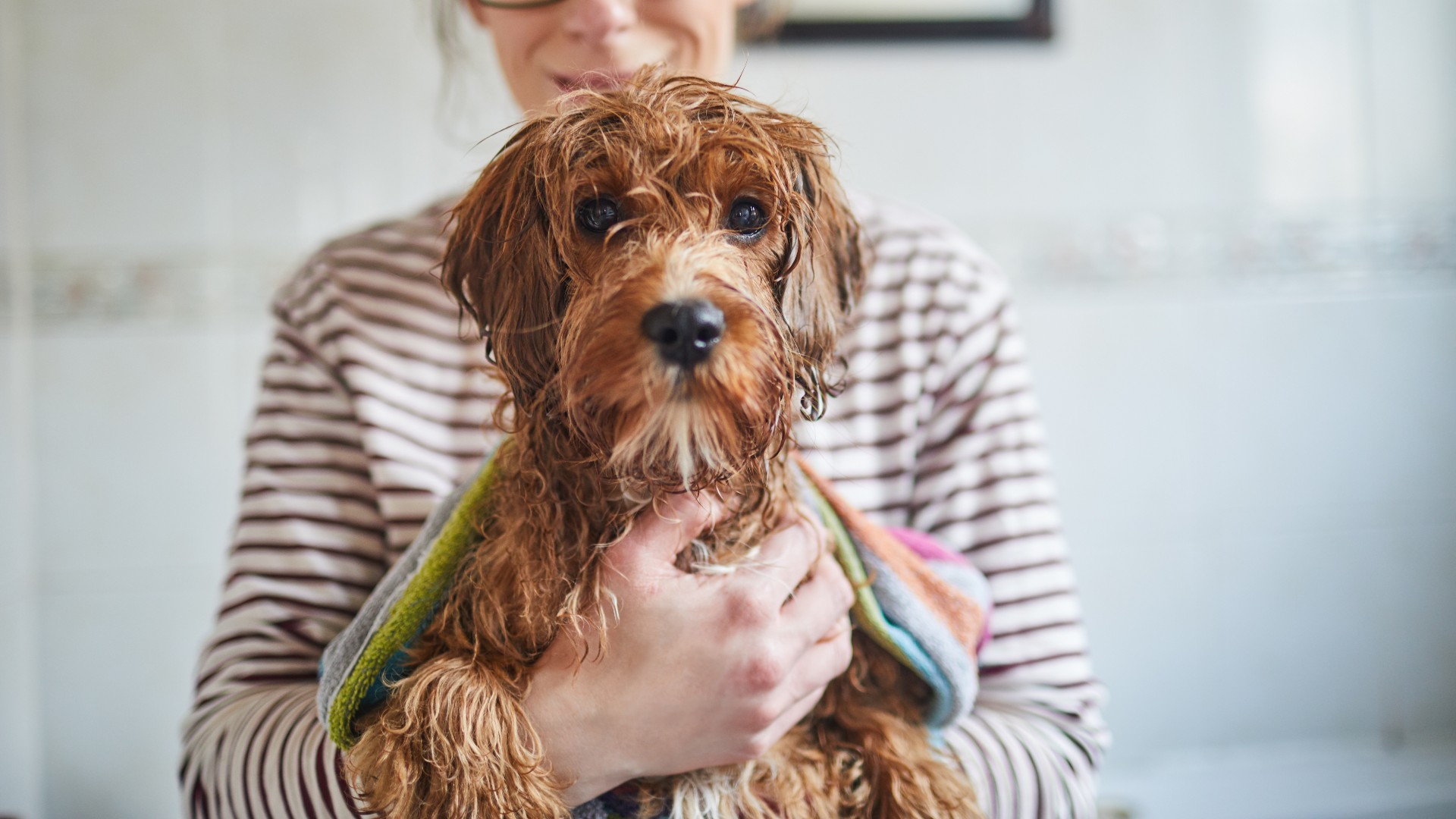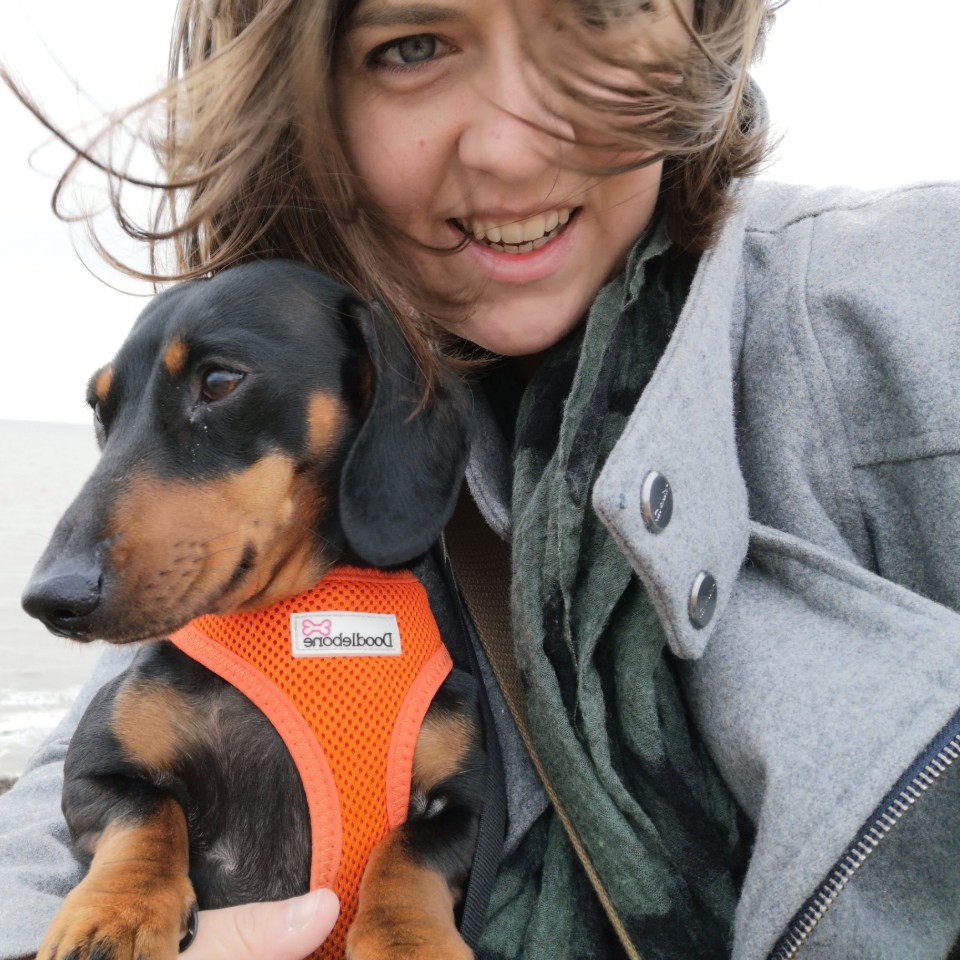Dog shivering after bath? What you can do to help
Is your dog shivering after bath time? Here's four things you can do to help make tub time more enjoyable

Is your dog shivering after bath time? If so, you may be worried about your canine companion associating getting clean with feeling cold or anxious. Thankfully, a small amount of shivering when your dog gets out of the bath is generally normal and to be expected.
While we don't advise bathing your dog too frequently (every four to six weeks for long-haired dogs and between one and three months for short-haired breeds is recommended), a good lather with the best dog shampoo now and again is a great way to remove dirt and debris and keep their coat looking its best.
Most dogs will shake the minute they get out of the tub as a way of removing excess water and some may shiver for a short amount of time until their body temperature has regulated. If your dog tends to struggle with staying warm and shivers on a regular basis, then it's worth a trip to the vet to rule out any underlying health issues.
Helping your pup to warm up quickly once they're nice and clean is one of the most important parts of learning how to give a dog a bath. With that in mind, we're sharing some of our favorite tips to help you get your dog get all cozy and warm again after tub time. Let's take a look...
What to do if your dog is shivering after their bath
1. Check the temperature of the bath water
Just as you would with your own bath, it’s important to get the temperature of your dog’s bath just right. That means it should neither be too cold, nor too hot.
Make sure to put water in the bath before you put your pooch into it - having them stand in an empty bath while you fill it up with water which may not be the right temperature can be distressing, especially if they are prone to shivering.
Ideally, you want the water’s temperature not to be too far off the ambient temperature of the room/house so that the difference between the two when you take your dog out to dry isn’t too marked - the sudden change in temperature can add to the shivering problem.
Get the best advice, tips and top tech for your beloved Pets
On that note, try your best to do everything you can to make the room/house as pleasant a temperature as possible. In the colder months, notching up the heating for a little while just before the bath can go a long way to help, or placing your pet’s bed closer to a source of heat for them to cozy up in after can also be a good idea.
You might also want to avoid bathing your pet late at night, too - unless it’s absolutely necessary.
2. Create a calm atmosphere
Many dogs find baths to be a slightly traumatic experience, which can contribute to shivering after the bath.
If that sounds like your dog, try to only bathe them when it’s strictly necessary. Dog wipes, refreshing sprays, or brushes might be a better alternative for those that struggle with baths if they just need a light clean.
When it can’t be avoided, try your best to make the experience as calming as possible. Use a gentle, reassuring voice and have plenty of the best dog treats on hand to show your dog that they’re doing really well by being in the bath.
After you take them out of the bath, don’t just leave them to it. Stay with them to carry on with the reassurance and treats. You can also hold them to make them feel calm or stroke or fuss over them to make it an enjoyable experience.
3. Get your dog dry as quickly as possible

Before you even run the bath, make sure you’ve got everything you need to hand.
Don’t leave your dog standing frightened in the bath while you fumble around looking for that bottle of the best dog conditioner you’ve just invested in or having to go to the other end of the house to fetch towels once the bath is over.
Speaking of towels - have at least two next to you when bathing your furbaby. The first can be used when you’re picking your dog out of the bath to mop up the vast majority of water and you can use the second towel to finish off the job and make the overall process quicker.
The faster you can make the washing and drying process, the less likely you are to have to deal with shivering.
You should also aim to have a freshly clean and dry blanket ready for your dog to snuggle into once they are almost completely dry. This will help them keep as warm as possible while they finish off the drying process.
One way you can also speed up the process is by using a hairdryer on a low heat and a low power. This won’t be suitable for every dog - particularly nervous ones who might not like the noise - so make sure to only use one if your dog is completely happy.
4. Keep an eye on them
If your dog is shivering after a bath, try not to worry, but make sure you keep an eye on them.
That’s especially true if it’s the first time you’ve given your puppy a bath, or it’s been a long time since you last bathed your dog. If you’ve got a nervous dog that hates baths, staying with them for a while after the event will help to reassure them that they’ve got nothing to worry about.
While it’s perfectly natural for your dog to shiver for a short time after a bath, if they are still shivering or struggling to get warm for a long time afterward - or if it’s unusual for your dog - be sure to get a second opinion from your dog’s vet.
For more great grooming-related content, be sure to check out our guide to how to give a dog a flea bath and how to groom a dog. This is how often you should bathe a puppy.
Amy Davies is a freelance writer and photographer with over 15 years experience. She has a degree in journalism from Cardiff University and has written about a huge variety of topics over the years. These days she mostly specialises in technology and pets, writing across a number of different titles including TechRadar, Stuff, Expert Reviews, T3, Digital Camera World, and of course PetsRadar. She lives in Cardiff with her dog, Lola, a rescue miniature dachshund.

